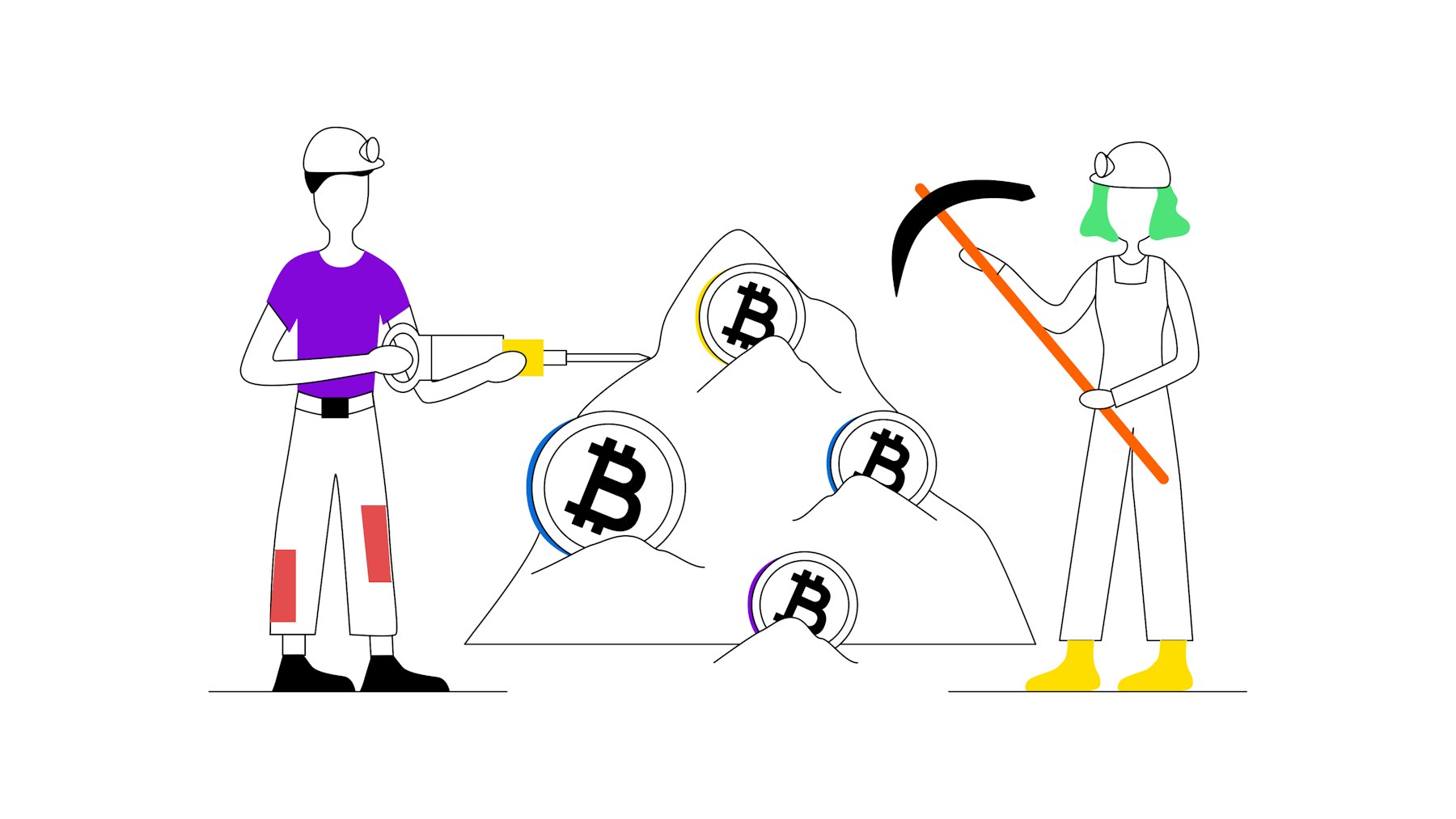Mining equipment
In the early days of mining, miners used the central processing units (CPUs) of their PCs to mine Bitcoin. Miners eventually realised that graphics cards (GPUs) are better suited for mining Bitcoin. However, graphics cards also need more energy. In recent years, special “ASICs” (application-specific integrated circuit chips) have been developed specifically for Bitcoin mining. Presently, Bitcoin and a number of other digital currencies are mined via mining pools, where lots of miners join forces and combine their hash rates in the quest for block rewards.
The computational difficulty of crypto mining
Solving mathematical puzzles for valid block creation requires huge amounts of computational power. Because the difficulty is rising continually, miners are joining forces in Bitcoin mining pools to solve mathematical puzzles together. The first individual miner or the mining pool that finds the right hash gets the block reward.
Usually, block rewards consist of new coins or tokens native to a blockchain network such as Bitcoin. In a mining pool, block rewards are split among participants in proportion to their share of computing power in the mining pool. This way each participant is adequately invested in the process.
Bitcoin’s limited supply
Unlike gold, of which there are still undiscovered deposits all over the planet (and in space), Bitcoin has a limited and finite number of 21 million units. As of April 2023, about 19 million Bitcoins have already been mined, and it is estimated that the last Bitcoin will be mined by 2140.
After all 21 million bitcoins have been mined, miners will still need to contribute to the Bitcoin network in order to keep it running. New blocks will still be generated, but the rewards will change. Instead of getting new coins as a block reward, miners will receive a share of the transaction fees spent by people who send transactions within the network.
